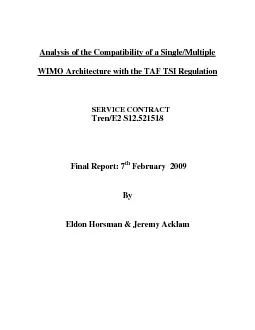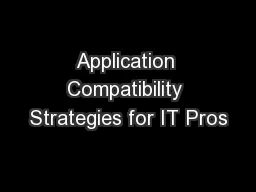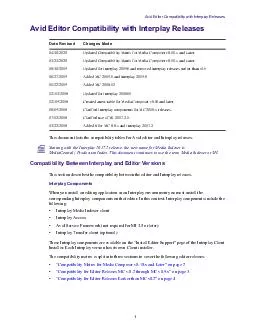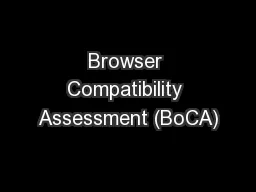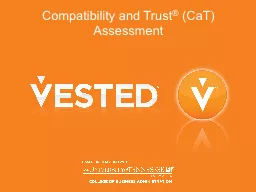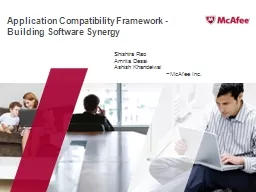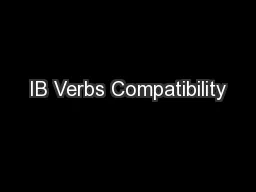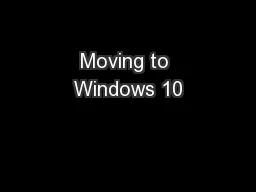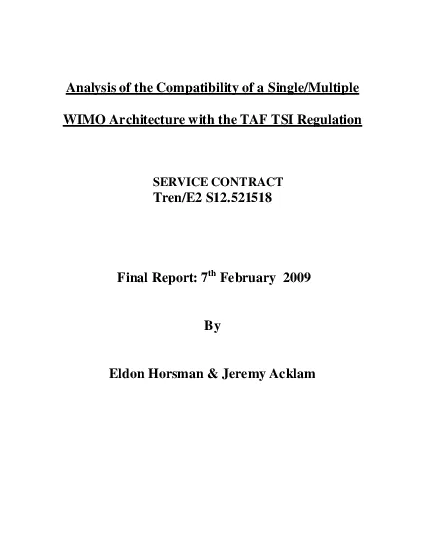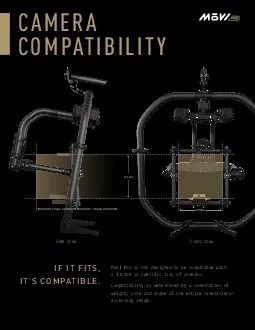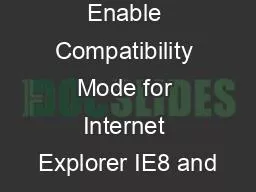PDF-Analysis of the Compatibility of a SingleMultiple
Author : cadie | Published Date : 2021-06-11
WIMO Architecture with the TAF TSI Regulation SERVICE CONTRACT TrenE2 S12521518 Final Report 7th February 2009 Eldon Horsman Jeremy Acklam 2Table of Contents Pa
Presentation Embed Code
Download Presentation
Download Presentation The PPT/PDF document "Analysis of the Compatibility of a Singl..." is the property of its rightful owner. Permission is granted to download and print the materials on this website for personal, non-commercial use only, and to display it on your personal computer provided you do not modify the materials and that you retain all copyright notices contained in the materials. By downloading content from our website, you accept the terms of this agreement.
Analysis of the Compatibility of a SingleMultiple: Transcript
Download Rules Of Document
"Analysis of the Compatibility of a SingleMultiple"The content belongs to its owner. You may download and print it for personal use, without modification, and keep all copyright notices. By downloading, you agree to these terms.
Related Documents

